How do you group your customers together by their shared psychological characteristics?

How do you group your customers together by their shared psychological characteristics?
Psychographic segmentation is a marketing strategy that leverages customer data and, with a foundation in psychology, uses data to create customer segments based on psychological characteristics. This article provides you with all you need to know on this topic.
Your market research is outdated. You’re left making assumptions about your customers using methods that don’t quite cut it anymore.
In the online world, it’s becoming harder and harder to understand who your customers are based on how they browse.
Your campaigns are all the same regardless of who you’re targeting - and your ROI is suffering as a result.
So what do you do?
You leverage psychographic data for psychographic segmentation.
Psychographics bridge the gap between consumer psychology and data, taking your behavioral data to the next level of insight.
This article will guide you through psychographic segmentation, its advantages, variables, and examples.
In an age where everyone around you is screaming “customer-centricity” and “personalization”, psychographic segmentation will help you become more relevant as a brand.
Leveraging psychographics will:
Ready?
Let’s go.
Psychographic segmentation is the process of creating clusters of customers who share similar characteristics and then grouping them together. These clusters will form subsets (or segments) of customers based on their:
This article will talk you through the ones in bold.
Back in 1980, Arnold Mitchell developed VALS (values, attitudes, lifestyles) which became a technique for market research - this provided the springboard for psychographic segmentation.
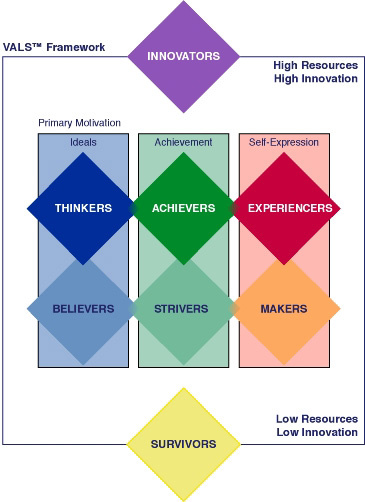 VALS framework by Arnold Mitchell
VALS framework by Arnold Mitchell
Today, psychographics are a powerful criterion for effective market segmentation because they take into account the psychological makeup of the consumer:
And how can you, as a marketer, predict these patterns of behavior?
We won’t beat around the bush: psychographics has had a bad name in recent years. However, psychographic segmentation operates on the belief that getting to know your customers better will, in turn, help them get to know your brand better.
Furthermore, psychographic data supplements your behavioral and demographic data. It connects your brand, messaging, and general marketing strategies with the psychology of your customers. It’s the last piece of the puzzle to achieving a holistic customer view!
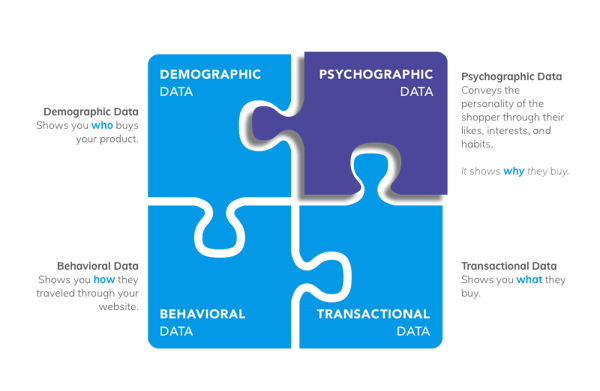
That’s what you should keep in mind when segmenting on psychographics. It’s about how you can use these influencing factors to become more customer-centric and relevant as a brand.
And that’s what marketing is all about, after all.
Let’s take a look at some psychographic segmentation variables and how companies are using them to market towards their target segments.

Legacy brands like Gucci have a good idea of who their target audience is: they aim their products at the upper-class consumer with high quality, high prices, and high fashion.
Does this stop them from branding themselves as a familiar and accessible luxury brand? Not Gucci. Their 2015 “A That Feeling When” campaign leveraged meme-culture to appeal to millennials. The campaign responded to the psychographic segment of the “upper-class millennial”.

And guess what? Their strategy worked. The memes had over 2 million likes and outperformed Gucci’s previous campaign.
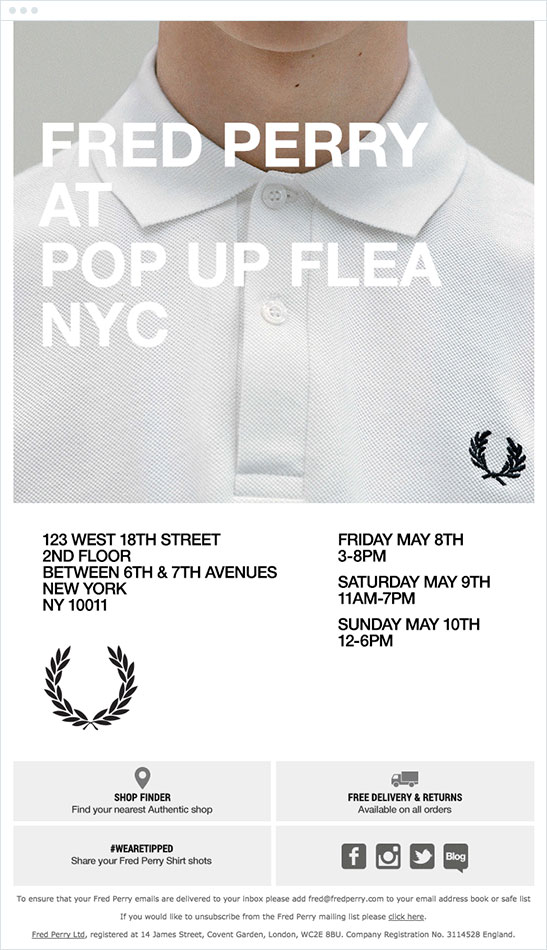
Another way to use psychographic segmentation is to create clusters based on your consumers lifestyles. For example, Fred Perry targeted this email campaign towards the lifestyle of the “busy New York male”, leveraging flash retail.
Coupled with quick and easy return rates, the pop-up store appealed to this lifestyle. The email also does a no-nonsense job of showing the segment exactly what it needs to know - address, time and date, even a shop finder.
To give you an idea of psychographic segments by lifestyle, here are a few examples of “trending” lifestyles that I’ve found online:
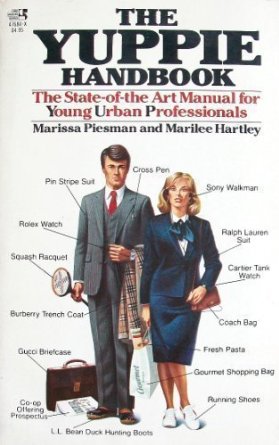 “Yuppie handbook” form the ‘80s with generic products that appeal to them (of course these are more stereotypical products, yours will be grounded in hardcore research, right?)
“Yuppie handbook” form the ‘80s with generic products that appeal to them (of course these are more stereotypical products, yours will be grounded in hardcore research, right?)
Once you do your own research you’ll find that there are a whole lot of segments that you can create to divide and conquer your customer’s lifestyles.
Matcha Source, for example, tailors their webshop copy to the lifestyle of the “married soccer mum”:
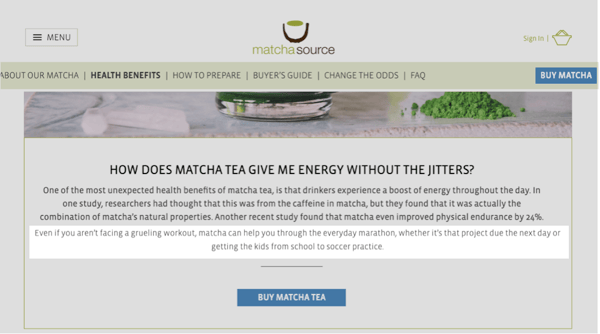
Less subtle than Fred Perry’s approach. What’s the takeaway?

Interest is another psychographic segmentation approach. One way to segment your audience based on their interests is to track “interest tribes”. Or, digital communities that make up a subculture of some kind.
Basically, the internet is segmenting for you! It’s up to you to uncover your opportunity segments within different customer interests.
Because, in the end, it’s not enough to have a segment that is, for example, “interested in alcohol”. This is too broad. Instead, what Johnnie Walker does is to deliver a product relevant to the “Game of Thrones” interest tribe. So now we have the micro-segment, “Game of Thrones fans who also drink whiskey” - hands up if this is you! ✋
Some other digital communities I’ve come across are:
I’ll admit there were some weird ones, too. But what is the internet if not all-encompassing?


Values are another psychographic segmentation variable to pay close attention too. IKEA, for example, released a sustainability report showing how to make more sustainable furniture and architectural choices.
More and more retailers are moving towards sustainable values in order to appeal to their target audiences, but also because this is becoming a necessity given climate change inaction.
You can track your customers’ values by gathering all the information you already have on them about their backgrounds (class, interests, lifestyles) and then drawing assumptions from these.
For example, a millennial woman who has previously bought from independent retailers, spends time reading webshop supply chains, and chooses products with “eco” tags, may be part of the environmentally-conscious market segment.
In the online world, browser history, previous purchases, and heat maps are just a few ways you can track behavior. With this data, it’s up to your team to help make these kinds of assumptions, drawing meaning from customer motivations.
IKEA’s omnichannel sustainability campaign goes from creating a report, to value-driven campaigns, to sustainable product badges on their webshop

Mirror, the interactive home-trainer, has spiked heightened interest since it began selling in 2018. That’s because its webshop speaks to the personality of the workout-fiend who can’t find time to go to the gym. And to capitalize on this personality, Mirror uses a strategy of FOMO and innovation to drive their copy and imagery.
This is where understanding consumer psychology becomes important. If your customers respond to things like Social Proof, Innovation, Endowment, Authority, or Scarcity, this can tell you a lot about who they are as people.
Another example that I’ve seen referenced a lot when segmenting by personality is Harley Davidson. The motorbike brand is notorious for targeting the rough, rebellious, free, thrill-seeking American man - and this personality has influenced their overarching marketing strategy since the 1930s!
 Harley Davidson ad 1937
Harley Davidson ad 1937
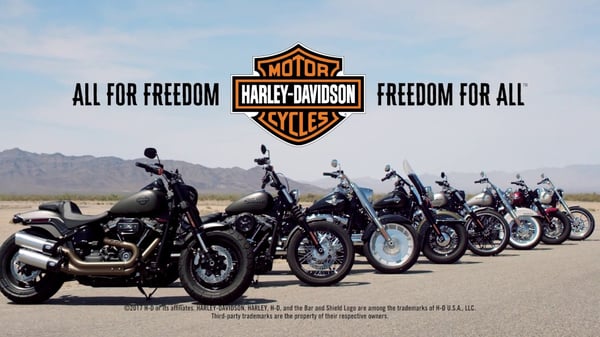 Harley Davidson ad 2019
Harley Davidson ad 2019
In psychology, the Big Five traits of personality are:
For shopper profiles, this will be a bit different. This 2019 report by Resonate groups shoppers as activist shoppers, personal values shoppers, advice-seeking shoppers, and blog-obsessed shoppers. Check which segments work for your brand and target audience.
Starbucks is a big fan of psychographic segmentation, and this largely defines their relatability as a brand. For example, they have the,
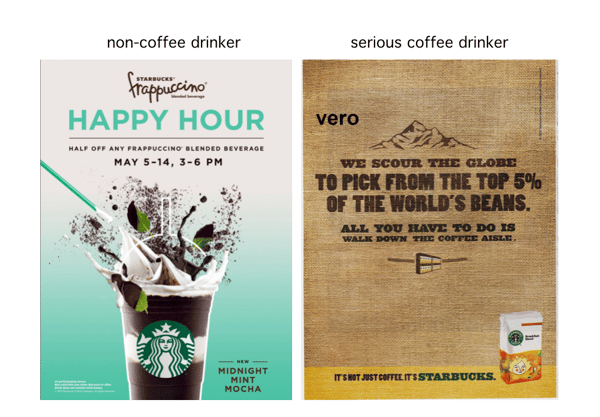 Starbucks campaigns per psychographic segment
Starbucks campaigns per psychographic segment
Starbucks’ campaigns accordingly appeal to these different segments, which is part of the reason they’ve become so successful with consumers.
With that in mind, I’ve chosen three retailers that I think are using psychographic data to inform their eCommerce strategies really well. In these examples, psychographic segmentation has proven to enhance marketing directives.
Let’s learn from the best…
Patagonia knows who their target audience is. They know what the brand stands for, and don’t make tradeoffs doing so, which is why they attract the audience that they do. Furthermore, they segment effectively within this audience depending on their lifestyle.
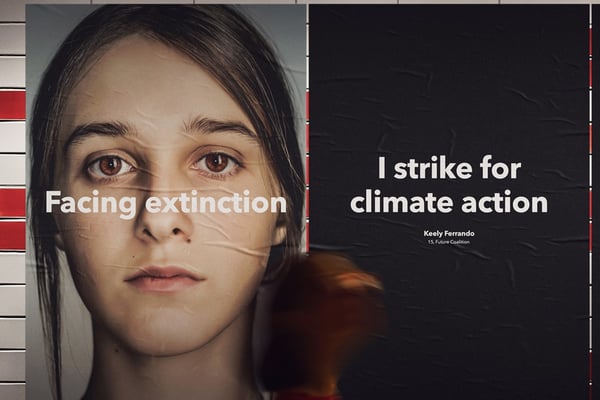
For example, to support the climate strikes last year, Patagonia released their “facing extinction” campaign and closed down their stores in protest. Being a retailer, it’s not enough to only appear to reinstate the values of your target segment (although closing down their stores was a good way to prove their solidarity to the cause).

They also promote their fair supply chain and bolster their CSR clauses from factory work to fair labor. Authenticity is key when your brand is known for having a strong political position: you need to follow through.
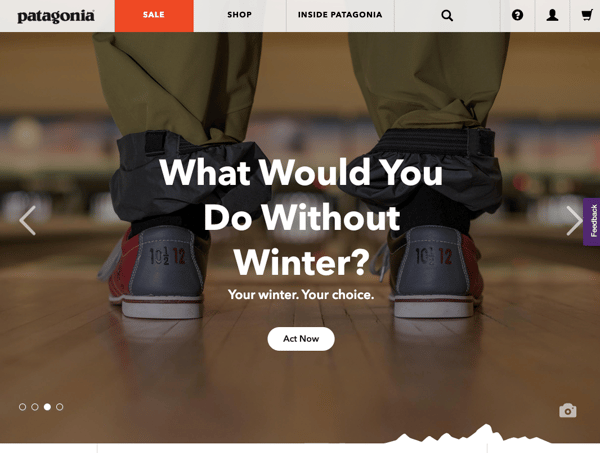
Patagonia’s homepage banner also uses psychographic segmentation: it’s dynamic and resonates with the profile of the visitor. The segment for the banner above isn’t just the eco-conscious adventurer. It’s the winter shopper who is unique and responds to a direct call to action, “Act now”.
Psychographic segmentation, therefore, informs Patagonia’s overall branding, by taking their customers’ values into account in all their messaging and communication. Their audience can be divided into:

And within these psychographic segments, there will be overlap, micro-segments, and high-value segments that all of Patagonia’s campaigns will take into account, from ads to social media campaigns.
On a micro-level, psychographic segmentation can be driven by product badges on your webshop PLP.
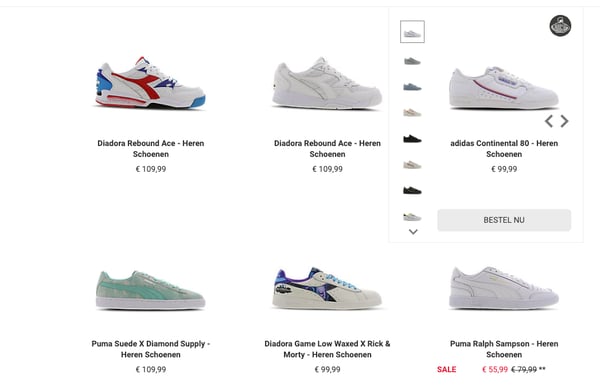
Take a look at Foot Locker’s “Foot Locker man” badge on the Adidas shoe above (product badges are nudges because they are subtle cues that attempt to drive behavior). Foot Locker can group customers who convert based on Foot Locker’s “stamp of approval” into a psychographic segment of people who respond to Authority.
That’s because when testing different product badges, the one that stands out is their Authority badge. With the knowledge that their stamp of approval drives purchase behavior, they can then begin to implement their insights omnichannel. The campaign below, for example, features their signature badge pretty heavily:
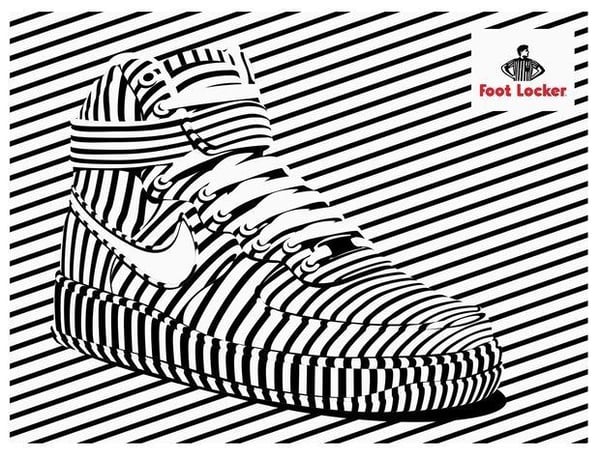
Having a psychographic segment of people who respond to Authority means Foot Locker can also use words like “expert” or “staff picked” to recommend further products onsite or enhance their campaign copy like in this twitter post:
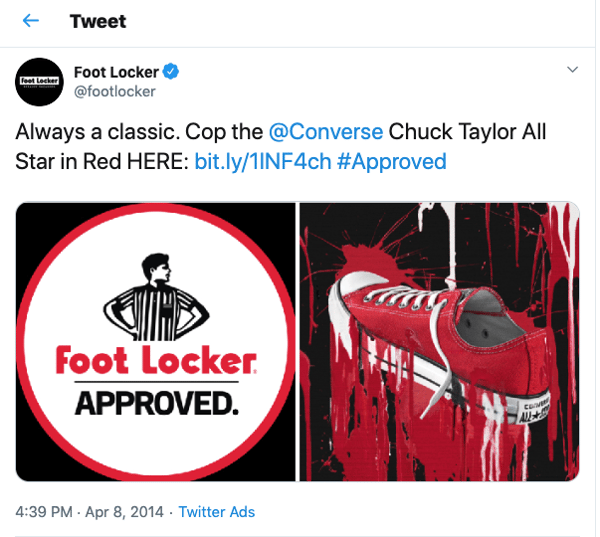
The “Foot Locker approved” badge gives them a chance to show their credibility across multiple channels, simply using insights that started from product badges on their PLP.
(If the product badge “Popular” would have driven online conversions more than Authority-based badges, then this would have changed how they segmented their audience and thus their communication).
Something to think about: subtle psychological triggers can lead to a deeper understanding of what your customers love about your products.
I use NastyGal as an example a lot, not only because I get a lot of emails from them, but because I think they take a great deal of care to correspond their branding communication with their audience.

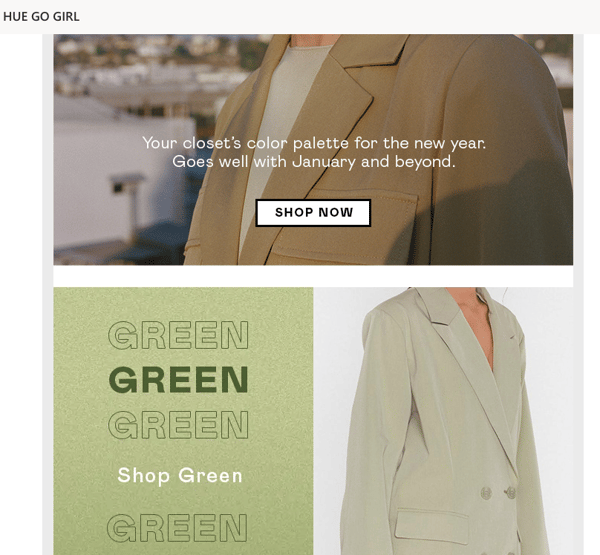
For example, with this email campaign, they take into account different psychographic variables:
The email campaign is also directed at the “New year, new you” segment of female shoppers who respond to novelty, or the Fresh Start Effect (read more about this effect and other psychological marketing examples here).
Follow NastyGal’s multilayered psychographic segmentation, and you could also generate hyper-personalized campaigns that will drive your customers back to your webshop for more.
To recap, here’s a summary of what we’ve covered throughout this article:
What’s important to remember is that psychographic segmentation will only work if you stay transparent with your customers’ data, combine it with behavioral data and actionable insights, and stay consistent with your branding across all your channels.
Good luck!